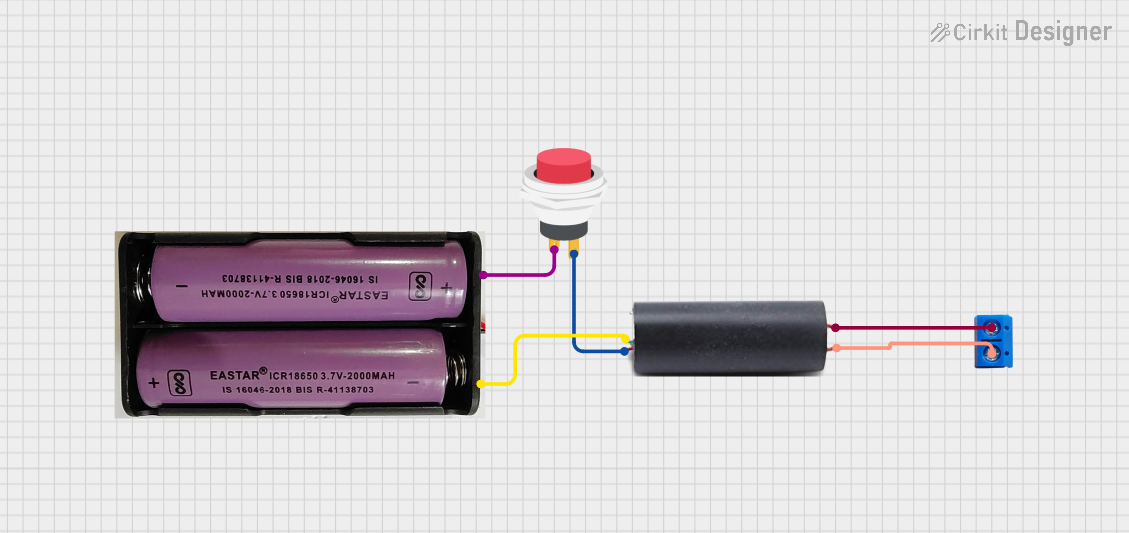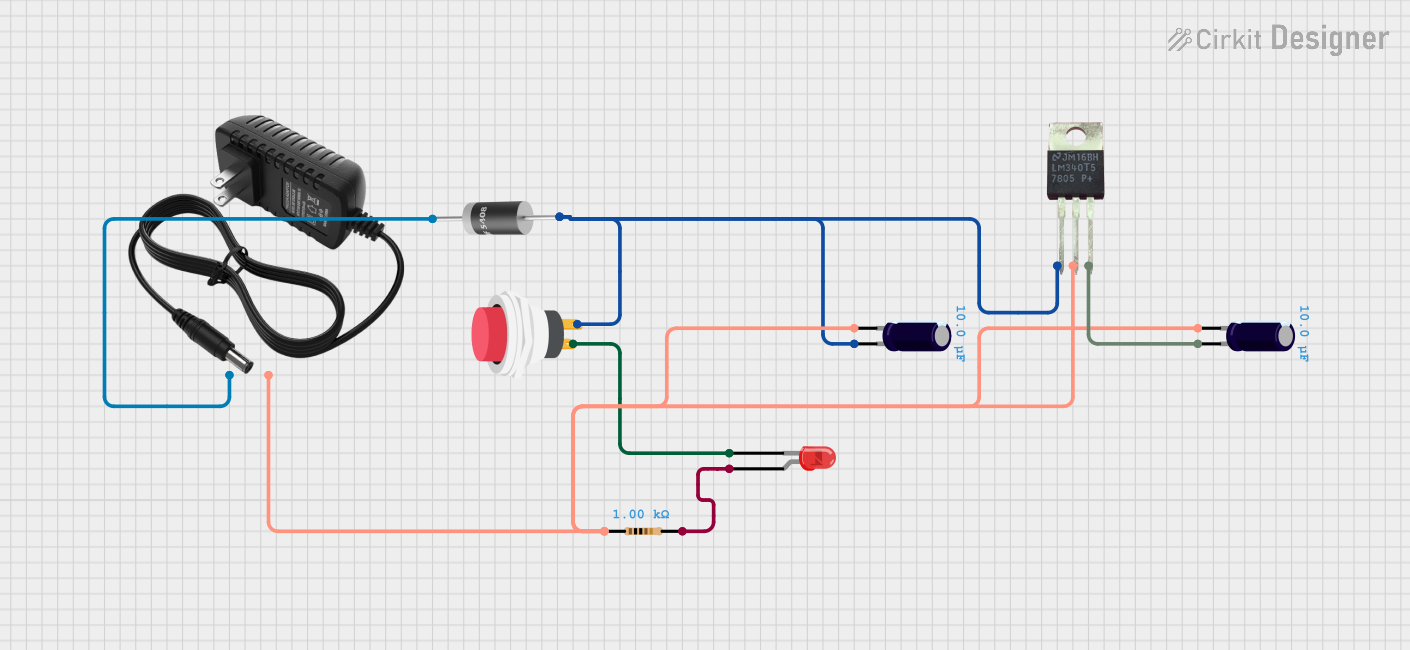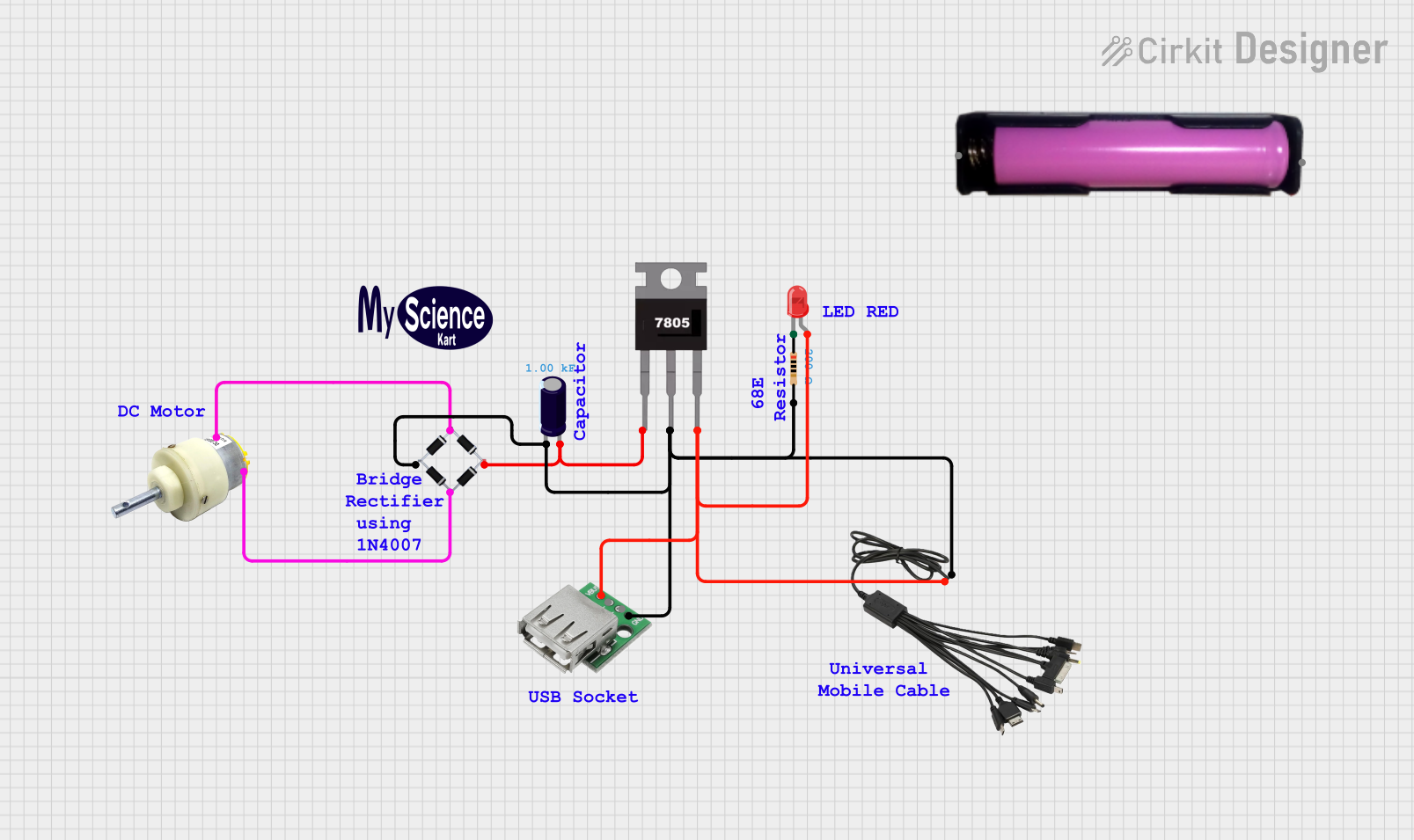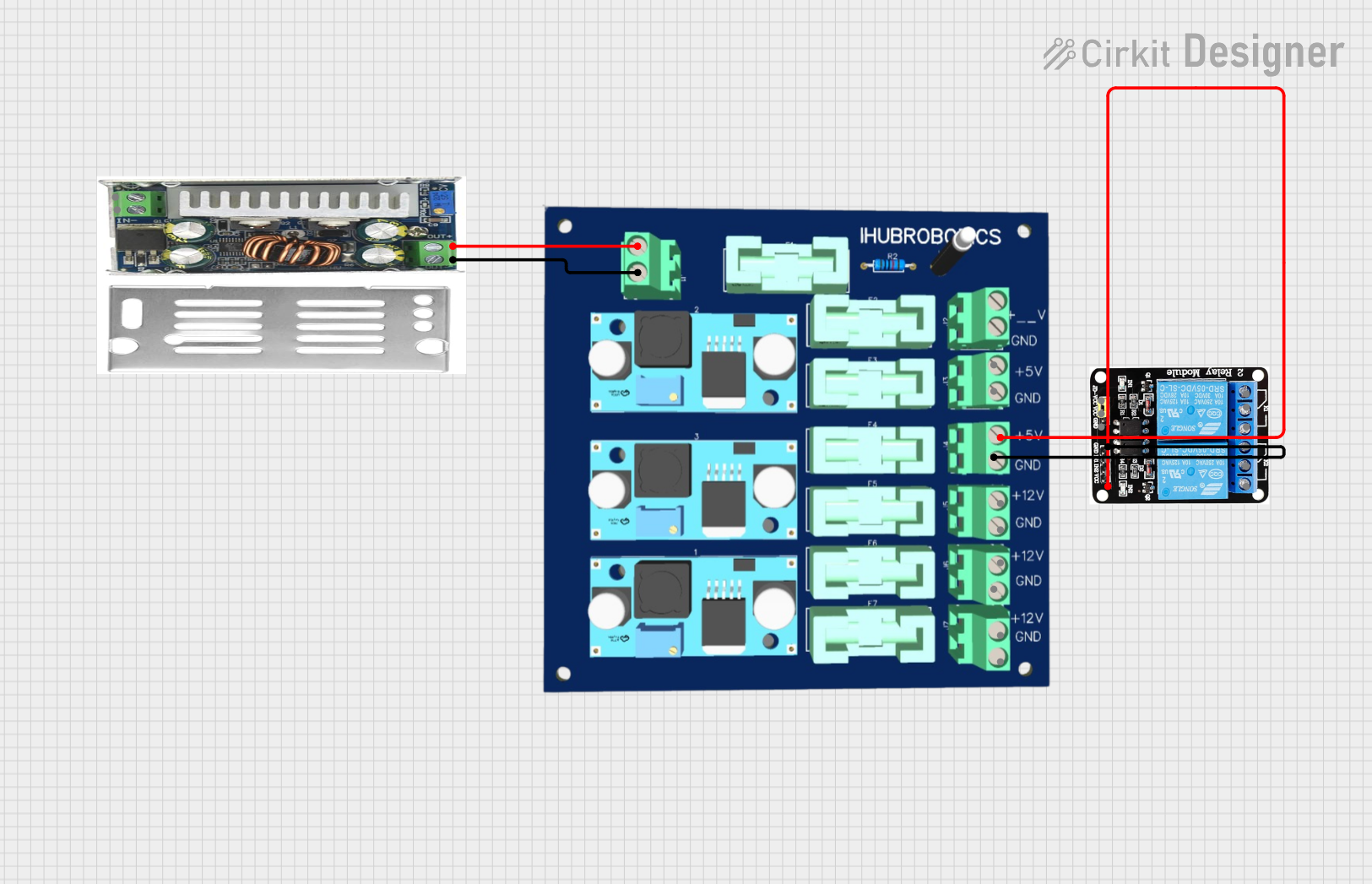
How to Use VCC 5V: Examples, Pinouts, and Specs

 Design with VCC 5V in Cirkit Designer
Design with VCC 5V in Cirkit DesignerIntroduction
- The VCC 5V is a voltage supply that provides a constant 5 volts, which is a standard power source for many electronic components, digital circuits, and microcontrollers. It is essential for powering devices that require a stable 5V input for proper operation.
- Common applications include powering microcontrollers (e.g., Arduino, Raspberry Pi), sensors, LEDs, and other low-power digital devices.
Explore Projects Built with VCC 5V

 Open Project in Cirkit Designer
Open Project in Cirkit Designer
 Open Project in Cirkit Designer
Open Project in Cirkit Designer
 Open Project in Cirkit Designer
Open Project in Cirkit Designer
 Open Project in Cirkit Designer
Open Project in Cirkit DesignerExplore Projects Built with VCC 5V

 Open Project in Cirkit Designer
Open Project in Cirkit Designer
 Open Project in Cirkit Designer
Open Project in Cirkit Designer
 Open Project in Cirkit Designer
Open Project in Cirkit Designer
 Open Project in Cirkit Designer
Open Project in Cirkit DesignerTechnical Specifications
- Voltage Output: 5V DC (Direct Current)
- Current Rating: Typically ranges from 100mA to several amps, depending on the power supply or regulator used.
- Power Source: Can be derived from USB ports, batteries with voltage regulators, or dedicated 5V power adapters.
- Stability: Provides a regulated and stable output voltage with minimal ripple.
Pin Configuration and Descriptions
The VCC 5V is typically represented as a single pin or terminal in circuits. Below is a table describing its common connections:
| Pin Name | Description | Notes |
|---|---|---|
| VCC | Positive 5V power supply | Connect to the 5V input of devices |
| GND | Ground (common return path) | Must be connected to circuit ground |
Usage Instructions
Connecting the VCC 5V to a Circuit:
- Identify the VCC pin or terminal on your device or circuit.
- Connect the VCC 5V output to the corresponding VCC input pin of the device.
- Ensure the GND (ground) of the power supply is connected to the GND of the circuit to complete the circuit.
Important Considerations:
- Voltage Compatibility: Ensure the device you are powering is designed to operate at 5V. Supplying a higher voltage may damage the device.
- Current Requirements: Verify that the power supply can provide sufficient current for all connected devices. Exceeding the current rating may cause the power supply to overheat or shut down.
- Polarity: Always double-check the polarity of the connections. Reversing the VCC and GND connections can damage components.
- Decoupling Capacitors: For sensitive circuits, add decoupling capacitors (e.g., 0.1µF and 10µF) near the power pins to reduce noise and stabilize the voltage.
Using VCC 5V with an Arduino UNO:
- The Arduino UNO has a built-in 5V pin that can be used as a VCC source for external components.
- Example: Powering an LED with a resistor using the Arduino's 5V pin.
// Example: Powering an LED using Arduino's 5V pin
// Connect the LED's anode (longer leg) to a 220-ohm resistor, and the resistor
// to the 5V pin. Connect the LED's cathode (shorter leg) to GND.
void setup() {
// No setup required for this simple circuit
}
void loop() {
// The LED will remain ON as long as it is connected to 5V and GND
}
Troubleshooting and FAQs
Common Issues
Device Not Powering On:
- Cause: Insufficient current from the power supply.
- Solution: Check the current rating of the power supply and ensure it meets the device's requirements.
Overheating Power Supply:
- Cause: Excessive current draw from connected devices.
- Solution: Reduce the load or use a power supply with a higher current rating.
Voltage Drops Below 5V:
- Cause: Long wires or high-resistance connections.
- Solution: Use thicker wires or shorter connections to reduce resistance.
Noise or Instability in the Circuit:
- Cause: Lack of decoupling capacitors.
- Solution: Add decoupling capacitors near the power pins of sensitive components.
FAQs
Q: Can I use the VCC 5V to power multiple devices?
A: Yes, as long as the total current draw of all devices does not exceed the power supply's current rating.Q: What happens if I connect a 3.3V device to the VCC 5V?
A: The device may be damaged due to overvoltage. Use a voltage regulator or level shifter to step down the voltage.Q: Can I use a USB port as a VCC 5V source?
A: Yes, USB ports typically provide 5V, but the current is limited to 500mA for USB 2.0 and up to 900mA for USB 3.0. Ensure your device's current requirements are within these limits.